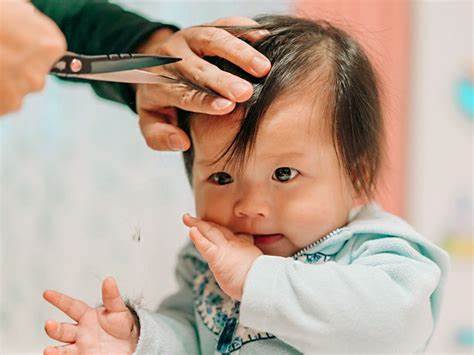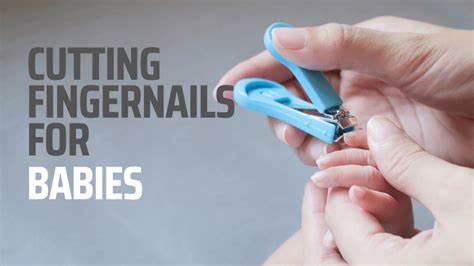Optimizing a baby’s sleep for better health is a critical aspect of early childhood development. Proper sleep supports a baby’s physical growth, cognitive development, and emotional well-being. Conversely, insufficient or poor-quality sleep can lead to developmental delays, irritability, and health issues. Understanding and implementing effective sleep strategies is essential for parents.
How to Help Your Baby Sleep for Better Health
Ensuring your baby gets enough quality sleep is one of the most impactful things you can do for their overall health and development. From boosting their immune system to supporting brain growth, sleep plays a vital role. This guide provides a step-by-step approach to establishing healthy sleep habits for your little one.
Sleep is a naturally recurring state of mind and body, characterized by altered consciousness, relatively inhibited sensory activity, reduced muscle activity, and inhibition of nearly all voluntary muscles during rapid eye movement (REM) sleep. For infants, sleep is crucial as it’s during these periods that much of their physical and mental development occurs.
The Importance of Baby Sleep for Health
Historically, the understanding of infant sleep has evolved. Early 20th-century parenting advice often emphasized strict schedules, while modern research highlights the importance of responsive parenting and understanding a baby’s individual cues.
For a baby, sleep is not just about rest; it’s a period of intense activity for their developing body and mind.
- Brain Development: During sleep, a baby’s brain processes information, strengthens neural connections, and consolidates memories. This is crucial for cognitive functions like learning and language acquisition.
- Physical Growth: The majority of growth hormone is released during deep sleep, making adequate rest vital for a baby’s physical development.
- Immune System: Sleep helps bolster a baby’s immune system, making them more resilient to illnesses.
- Emotional Regulation: Well-rested babies are typically happier, less fussy, and better able to regulate their emotions. Chronic sleep deprivation can lead to irritability and behavioral challenges.
Step-by-Step Guide to Helping Your Baby Sleep Better
Helping your baby sleep well involves a combination of creating a conducive environment, establishing routines, and understanding their unique sleep patterns.
Step 1: Understand Your Baby’s Sleep Needs
A crucial first step is to recognize that a baby’s sleep needs change as they grow. What works for a newborn won’t necessarily work for a six-month-old.
- Newborns (0-3 months): Typically sleep 14-17 hours a day, often in short bursts. Their sleep is less structured, with no clear distinction between day and night. Newborn sleep is characterized by frequent feedings and short wake windows.
- Infants (4-11 months): Sleep 12-15 hours, usually consolidating into longer stretches at night with 2-3 naps during the day. This is often when sleep training can begin if desired.
- Toddlers (1-2 years): Need 11-14 hours of sleep, typically with one afternoon nap.
Understanding these averages helps set realistic expectations and prevents unnecessary worry.
Step 2: Establish a Consistent Bedtime Routine
A bedtime routine signals to your baby that it’s time to wind down and prepare for sleep. Consistency is key, even if the routine is short.
- Timing: Aim for a consistent bedtime each night, ideally between 6:00 PM and 8:00 PM for most babies and toddlers.
- Activities: Include calming activities such as:
- A warm bath: Helps relax muscles and lower body temperature, signaling sleep.
- Gentle massage: Soothes and promotes bonding.
- Reading a book: Establishes a quiet, comforting ritual.
- Singing a lullaby: The familiar sound can be very calming.
- Dimming the lights: Reduces stimulation and encourages melatonin production, the sleep hormone.
Avoid overly stimulating activities close to bedtime, such as vigorous play or screen time.
Step 3: Create an Optimal Sleep Environment
The environment where your baby sleeps significantly impacts their ability to fall asleep and stay asleep.
- Darkness: Make the room as dark as possible to promote melatonin production. Use blackout curtains or blinds.
- Quiet: Minimize noise. White noise machines can be helpful to block out household sounds and create a consistent, calming background hum.
- Temperature: Keep the room cool, between 68-72°F (20-22°C). Overheating is a risk factor for SIDS and can make sleep difficult.
- Safety: Always place your baby on their back to sleep on a firm, flat surface in a crib or bassinet. Avoid loose bedding, bumpers, pillows, and soft toys in the sleep area to prevent sudden infant death syndrome (SIDS). The American Academy of Pediatrics (AAP) strongly recommends safe sleep practices to reduce the risk of SIDS.
Step 4: Teach Independent Sleep Skills (If Desired)
Around 4-6 months, many babies are ready to learn to fall asleep independently. This doesn’t mean leaving them to cry for hours, but rather giving them the opportunity to self-soothe. Self-soothing is the ability of a baby to calm themselves down and fall asleep without external help.
- Drowsy, But Awake: Place your baby in their crib when they are drowsy but still awake. This helps them associate their crib with falling asleep, rather than being transferred already asleep.
- Pause Before Intervening: When your baby stirs or fusses, wait a few minutes before rushing in. Sometimes, they can resettle themselves. This is often referred to as the “Ferber method” or “graduated extinction,” which involves progressively longer periods of checking on the baby without immediately comforting them fully. Other methods include “chair method” or “pick up/put down.”
- Consistency: Whatever method you choose, consistency is paramount. Inconsistent responses can confuse your baby.
Step 5: Address Naps Effectively
Naps are just as important as nighttime sleep for a baby’s overall health and development.
- Regular Schedule: Establish a consistent nap schedule based on your baby’s age and sleep cues.
- Location: Ideally, naps should occur in the same place as nighttime sleep to reinforce the association with rest.
- Watch for Cues: Look for signs of tiredness like rubbing eyes, yawning, or becoming fussy. Don’t wait until your baby is overtired, as this can make it harder for them to fall asleep. Overtiredness often leads to difficulty settling and shorter sleep durations.
Step 6: Manage Night Feedings and Wakings
As babies grow, the need for night feedings decreases.
- Gradual Reduction: For babies over 6 months, discuss with your pediatrician if and how to gradually reduce night feedings.
- Quick Checks: For night wakings, assess if your baby genuinely needs something (feeding, diaper change) or if they are simply stirring. If they are just stirring, a quick check and reassuring pat might be enough without fully engaging them. Keep lights low and interactions minimal during night wakings.
Step 7: Be Patient and Flexible
Every baby is different. What works for one may not work for another.
- Growth Spurts and Milestones: Sleep can be disrupted by growth spurts, teething, developmental leaps (like learning to crawl or walk), or illness. Be prepared for temporary setbacks.
- Parental Intuition: Trust your instincts. You know your baby best.
- Seek Professional Help: If you have persistent concerns about your baby’s sleep, consult with your pediatrician or a certified sleep consultant. They can offer personalized advice and rule out underlying medical issues.
Common Challenges and Solutions
- Sleep Regressions: Periods where a baby who previously slept well suddenly starts waking frequently. These are common around 4 months, 8-10 months, and 18 months. Maintain consistency in your routine and know that they are usually temporary.
- Teething: Can cause discomfort and disrupt sleep. Offer pain relief approved by your pediatrician before bedtime.
- Separation Anxiety: Common in older infants and toddlers, where they become distressed when a parent leaves. A comforting routine and reassurance can help.
FAQ: Helping Your Baby Sleep for Better Health
Here are some common questions parents ask about baby sleep:
Q1: How much sleep does my baby really need?
The amount of sleep a baby needs varies by age. Newborns need 14-17 hours, infants (4-11 months) need 12-15 hours, and toddlers (1-2 years) need 11-14 hours. These are general guidelines, and individual needs may vary.
Q2: Is sleep training harmful for my baby?
When done safely and responsively, sleep training is generally not harmful. Many methods exist, from gentle approaches to those involving more independent sleep. The goal is to teach babies to fall asleep independently, which can lead to better sleep for the whole family. Always consult with your pediatrician before starting any sleep training method.
Q3: What are the signs my baby is ready for sleep?
Look for cues like yawning, rubbing eyes, pulling on ears, becoming fussy, staring blankly, or losing interest in play. Catching these signs early helps prevent overtiredness, which can make it harder for your baby to fall asleep.
Q4: Can screen time affect my baby’s sleep?
Yes, screen time (from TVs, tablets, phones) can negatively affect a baby’s sleep. The blue light emitted by screens can suppress melatonin production, making it harder to fall asleep. It’s best to avoid screen time for infants and toddlers, especially close to bedtime.
Q5: What is the ideal room temperature for a baby’s sleep?
The ideal room temperature for a baby’s sleep is generally between 68-72°F (20-22°C). Dressing your baby in appropriate sleepwear for the temperature is also important to prevent overheating or getting too cold.
Q6: What is a “dream feed” and is it helpful?
A dream feed is a feeding given to a baby while they are still asleep, typically a few hours after they have gone to bed. The idea is to “top them up” so they can sleep for a longer stretch. Some parents find it helpful, while others find it disrupts their baby’s sleep more. It’s a personal choice and often depends on the baby’s age and feeding needs.
Q7: How do I handle sleep regressions?
Sleep regressions are temporary periods where a baby who was sleeping well starts waking frequently. The best way to handle them is to stick to your consistent bedtime routine, maintain healthy sleep habits, and offer comfort and reassurance without introducing new sleep crutches. They usually pass within a few weeks.









